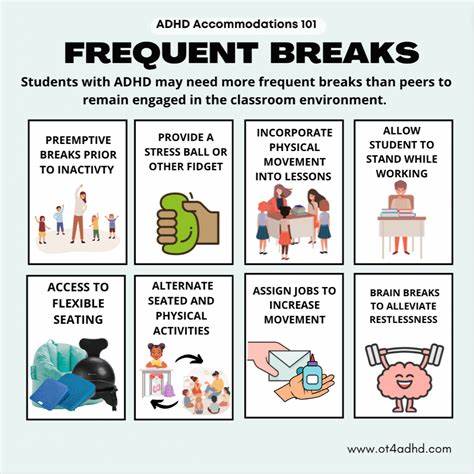For children with ADHD, breaks aren’t just a chance to relax—they’re essential tools for maintaining focus, regulating energy, and reducing frustration. But not all breaks are created equal. The key is to use them strategically, building them into the day in a way that supports your child’s natural rhythms and attention span.
Here’s how to structure break time so it works with your child’s brain, not against it.
Why Breaks Help ADHD Brains
ADHD affects executive functions, making it harder for children to:
- Sustain attention for long periods
- Transition smoothly between tasks
- Regulate emotional and physical energy
Regular, planned breaks help:
- Prevent burnout
- Reset the nervous system
- Rebuild motivation and attention
When breaks are predictable and purposeful, they boost productivity—not delay it.
1. Time Breaks Based on Focus Windows
Most children with ADHD can focus for 10–20 minutes at a time (sometimes less). Use that as your baseline:
- 15 minutes of work = 5 minutes of break
- For younger kids: 10 minutes of work = 3 minutes of break
Use visual timers or alarms so children can see when the next break is coming.
2. Make Breaks Part of the Daily Routine
Breaks should be expected, not earned or used only as a reward. Incorporate them:
- Between school subjects or homework tasks
- After meals
- Before transitions (e.g., before starting chores or bedtime)
Consistent breaks create rhythm and help prevent meltdowns or avoidance.
3. Use Movement Breaks for Physical Regulation
Children with ADHD often need to release physical energy. Try:
- Jumping jacks or frog jumps
- Dancing to a favorite song
- Doing a quick obstacle course
- Walking outside for fresh air
Even 3–5 minutes of movement can help reset focus and mood.
4. Offer Sensory Break Options
Not every child wants to move. For some, calming sensory input works better:
- Fidget toys or sensory putty
- Laying under a weighted blanket
- Listening to soothing music or white noise
- Watching a lava lamp or glitter jar
Create a “break box” with these tools for easy access.
5. Avoid Screens During Short Breaks
Unless part of a longer rest (like after school), avoid using screens as breaks:
- They often over-stimulate or make transitions harder
- Use hands-on or physical options instead
Save screen time for true downtime—not between tasks that require focus.
6. Use Breaks to Practice Self-Regulation
You can use breaks to reinforce calm habits:
- Breathing exercises
- Stretching or yoga poses
- Quiet journaling or coloring
Guide your child gently and celebrate when they choose these tools on their own.
7. Track What Types of Breaks Work Best
Every child is different. Keep notes:
- What types of breaks help them refocus?
- How long should breaks last?
- What makes transitions easier afterward?
Tailoring breaks improves results over time.
8. Use Breaks as Teaching Moments
During or after a break, you might say:
- “What helped you feel better just now?”
- “What do you want to try next time you need a break?”
- “Let’s put that tool in your break box!”
This empowers your child to take ownership of their regulation strategies.
9. Gradually Increase Focus Time Between Breaks
As your child builds stamina, increase work periods by 1–2 minutes:
- From 10 to 12, then 15 minutes
- From 15 to 20 minutes with a visual reward at the end
This builds endurance while still respecting their current limits.
10. Don’t Skip Breaks, Even on Good Days
Sometimes when things are going well, it’s tempting to push through. But skipping breaks:
- Can lead to sudden crashes later
- May cause more resistance next time
Stick with the structure—even if your child seems “fine”—to preserve long-term success.
Final Thought: Breaks Are Smart, Not Lazy
Well-timed breaks don’t waste time—they make time more productive. For children with ADHD, breaks provide a needed mental reset that helps them return to tasks with better focus, patience, and emotional readiness.
By viewing breaks as strategic tools—not distractions—you give your child the structure and flexibility their brain thrives on.
